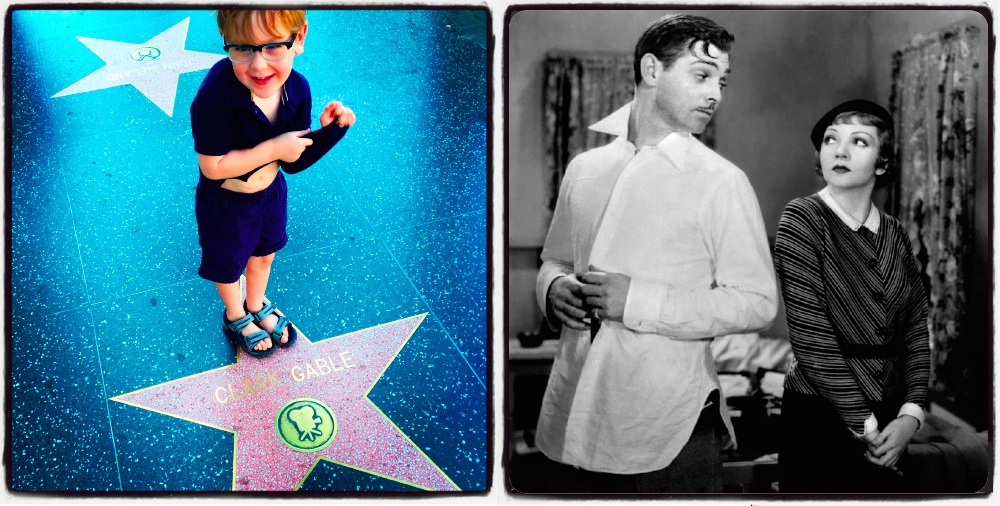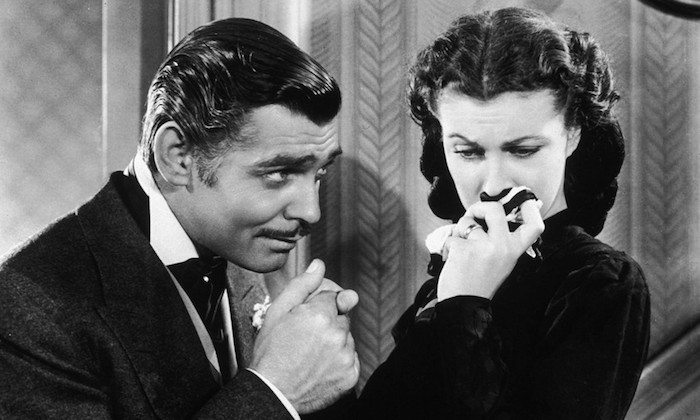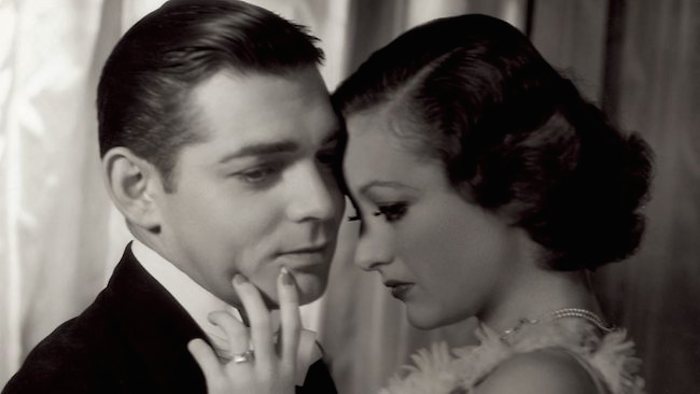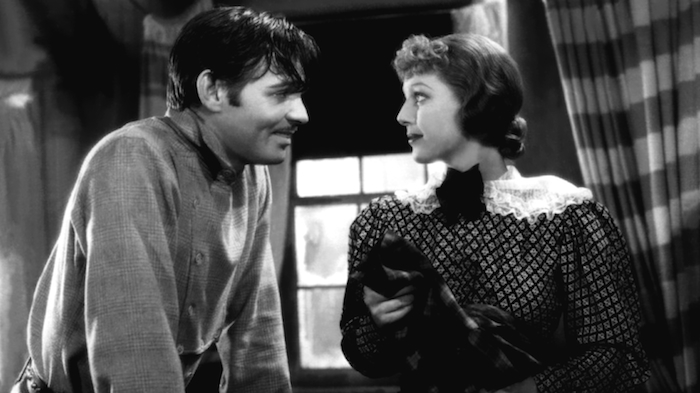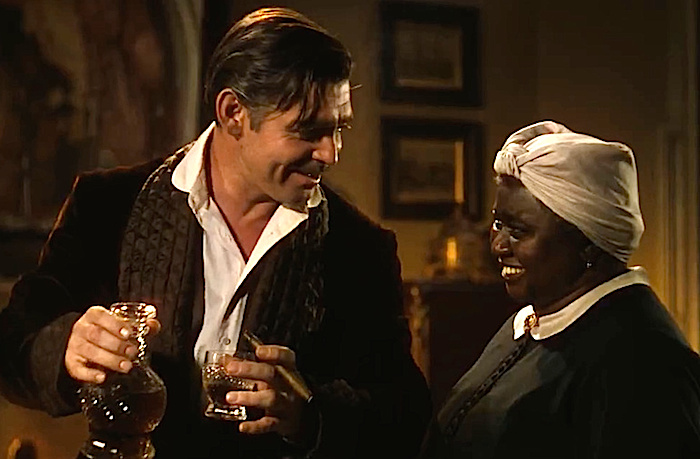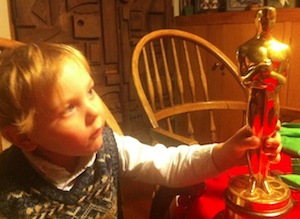 A weekly feature in which my five-year-old son is let loose on the Hollywood Walk of Fame, one of the most popular tourist attractions in Los Angeles, and chooses a star from among the more than 2,500 honorees. His “random” picks sometimes reveal unexplained connections such as the summer day in 2012 when he sat down on the star of actress Celeste Holm and refused to budge. We later learned that the Oscar-winning actress had died only hours earlier. There are five categories on the Walk of Fame: motion pictures, television, radio, music and theater but Charlie tends to favor the movies.
A weekly feature in which my five-year-old son is let loose on the Hollywood Walk of Fame, one of the most popular tourist attractions in Los Angeles, and chooses a star from among the more than 2,500 honorees. His “random” picks sometimes reveal unexplained connections such as the summer day in 2012 when he sat down on the star of actress Celeste Holm and refused to budge. We later learned that the Oscar-winning actress had died only hours earlier. There are five categories on the Walk of Fame: motion pictures, television, radio, music and theater but Charlie tends to favor the movies.
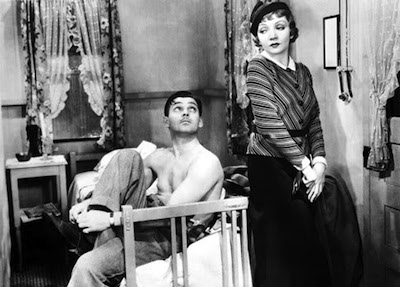 Charlie’s psychic powers were in evidence this week on the Hollywood Walk of Fame. Switching from the relatively obscure to one of the biggest superstars of yesteryear, Charlie’s choice of “The King,” Clark Gable, was accompanied by the unusual gesture of him lifting up his shirt to reveal his bare chest. To me that evoked one of the most oft-repeated legends about Gable — that when he took off his shirt during his Oscar-winning performance in the 1934 Frank Capra classic, It Happened One Night, and revealed that he wasn’t wearing an undershirt, as was the style of the day, sales of men’s undershirts plummeted across the country. “If Gable doesn’t wear an undershirt, why should I?” Movie and pop culture historians debate the validity of this claim, which may well have been the brainchild of an overzealous publicity agent and included the assertion that the devastated American underwear industry didn’t recover until World War II when uniforms got men back into the habit of wearing undergarments. Whatever the truth, it was a pretty racy scene for the day and played up the hot and heavy chemistry between Clark Gable and Claudette Colbert who both won Oscars for their work on this wonderful film.
Charlie’s psychic powers were in evidence this week on the Hollywood Walk of Fame. Switching from the relatively obscure to one of the biggest superstars of yesteryear, Charlie’s choice of “The King,” Clark Gable, was accompanied by the unusual gesture of him lifting up his shirt to reveal his bare chest. To me that evoked one of the most oft-repeated legends about Gable — that when he took off his shirt during his Oscar-winning performance in the 1934 Frank Capra classic, It Happened One Night, and revealed that he wasn’t wearing an undershirt, as was the style of the day, sales of men’s undershirts plummeted across the country. “If Gable doesn’t wear an undershirt, why should I?” Movie and pop culture historians debate the validity of this claim, which may well have been the brainchild of an overzealous publicity agent and included the assertion that the devastated American underwear industry didn’t recover until World War II when uniforms got men back into the habit of wearing undergarments. Whatever the truth, it was a pretty racy scene for the day and played up the hot and heavy chemistry between Clark Gable and Claudette Colbert who both won Oscars for their work on this wonderful film.
Given Clark Gable’s superstar status, we won’t go into our usual career overview. While he is most remembered for his iconic role as Rhett Butler in Gone With the Wind, my personal list of favorite performances includes films such as Wife vs. Secretary Test Pilot, Idiots Delight, Boom Town, Teacher’s Pet, and The Misfits. Clark Gable was born on February 1, 1901, in Cadiz, Ohio, and died at the age of 59 on November 16, 1960, before the release of The Misfits, written by Arthur Miller, directed by John Huston, and co-starring Marilyn Monroe, Montgomery Clift, Thelma Ritter, and Eli Wallach. Gable’s death also came four months before the birth of his only son, John Clark Gable.
Given Charlie’s nod to the undershirt story, let’s take a look at a few interesting facts about Clark Gable that you may or may not be familiar with:
1. He had horrible teeth. Born with a very crooked smile, Gable also suffered from severe gum problems as a boy. Increased problems with periodontitis led to most of his teeth being extracted by the time he was 30. With his mouth full of dentures, Gable was famous in Hollywood for his bad breath, something Vivien Leigh complained about often during the filming of Gone With the Wind. While Leigh’s kvetching is documented, it’s hard to know how true some of these stories are, but it’s definitely the case that Gable had full dentures. Still, it’s clear that Carole Lombard (and many other female stars) didn’t seem to mind kissing the handsome actor!
2. His first two wives were 17 years older than Gable and his last wife was 15 years younger. Clark Gable was married five times. His wives were Josephine Dillon (1924-1930), Rhea Langham (1931-1939), Carole Lombard (1939-1942), Lady Sylvia Ashley (1949-1952), and Kay Williams Spreckels (1955-1960). Far be it from me to make assumptions about Gable’s feelings for his wives, but it’s pretty clear that his first two spouses, many years his senior, played a pivotal role in shaping the young man into the movie star he became. Among their many contributions, it was Dillon who gave Gable his first acting lessons and suggested that William Clark Gable start using his middle name in his acting career and it was Langham who bankrolled his early years in Hollywood. It was the supremely talented and beautiful Carole Lombard who was the love of Gable’s life. Her 1942 death in a plane crash while on a war bond tour devastated the actor and at the time he vowed to never marry again. Seven years later, however, he married British socialite Sylvia Ashley, ex-wife of screen legend Douglas Fairbanks, but that marriage ended badly. Gable’s final wife was Kay Williams Spreckels and by all accounts they had a very happy union until Gable’s untimely death. At his request, Gable is buried next to Carole Lombard in the Great Mausoleum at Forest Lawn but his understanding fifth wife, who died in 1983, is entombed in the same wall, one row down and to the left.
3. He had a long-term affair with Joan Crawford. Again, none of us were there but there is ample evidence, much of it coming from Crawford herself, that the two MGM superstars carried on a torrid affair that lasted for years. Both Clark Gable and Joan Crawford had risen up from the wrong side of the tracks to become enormous stars at MGM. When they first met, Joan was the much bigger star and had requested Gable as her leading man in two early talkies from 1931: Dance, Fools, Dance, and Laughing Sinners. During the making of their next film that year, Possessed, Joan Crawford (still married to Douglas Fairbanks, Jr.) reportedly fell hard for her co-star. Their affair made MGM studio head Louis B. Mayer apoplectic and he nixed Gable as Crawford’s co-star in her next film, Letty Lynton, but the public clamored for the two to re-unite on-screen and Mayer eventually gave in. They appeared together in Dancing Lady (1933), Chained (1934), Forsaking All Others (1934), Love on the Run (1936), and finally, Strange Cargo (1940). Joan respected Gable’s marriage to Carole Lombard and she herself had several husbands after Fairbanks. While their romance cooled in later years, the two remained good friends until Gable’s death, and, when asked years later who the love of her life was, Crawford replied, “Clark Gable was the only man I ever loved.”
4. He had a child with Loretta Young that he never publicly acknowledged. One long whispered-about rumor that definitely proved to be true was the fact that Clark Gable and Loretta Young had a biological daughter together. Gable and Young co-starred in the 1935 film The Call of the Wild, directed by William Wellman, and had a brief affair while on location. The resulting pregnancy was hushed up by Loretta Young’s handlers to avoid scandal and what happened to the baby girl, Judy Lewis, is like something straight out of a movie melodrama. Feigning illness and heading off to Europe during the final months of her pregnancy, Loretta gave birth to her daughter on November 6, 1935. Instead of bringing the baby back to California with her, she stashed her in a series of orphanages for almost two years until Young’s mother retrieved her with a story that Loretta had decided to adopt the pretty orphaned girl. As she grew up, there was much speculation about Judy’s resemblance to The King, but the girl only met her biological father once, when she was 15 and Gable visited her at home. They talked for a while and he kissed her on the forehead before leaving, but she had no idea she was talking to her Dad. When Judy was 23, the man she would eventually marry told her that everyone knew that Clark Gable was her real father but it was only five years after Gable’s death, when Judy was 31, that she finally confronted her mother about it and the actress confirmed the story, asking Judy not to reveal the truth until after her death. Judy Lewis wrote a book about her unusual parentage before she died in 2011.
5. He defended co-star Hattie McDaniel against racism. The chemistry between Clark Gable’s Rhett Butler and Hattie McDaniel’s Mammy in Gone With the Wind was mirrored in real life. Though much more politically conservative than his then-wife Carole Lombard, Gable was horrified at the huge Gone With the Wind premiere in Atlanta when he learned that McDaniel and the rest of the African American cast members would not be allowed to attend the main festivities. Though playing a key role in the film, Hattie McDaniel’s photo was even removed from the official program for the premiere in an attempt to appease segregationists. Gable threatened to boycott the premiere entirely and relented only when Hattie McDaniel herself begged him to go. Gable had also raised hell on the set of the film earlier that year when he discovered that bathrooms at the studio were designated “White” and “Colored.” He said he’d walk off the film unless the signs were removed which they promptly were. Despite the snub at the premiere, justice was served the following year when Hattie McDaniel became the first African American to win an acting Oscar, beating out co-star Olivia de Havilland. She dutifully read her studio-written speech that included a mention of her being “a credit to my race” but it was still an important moment in Hollywood history and Gable, himself overlooked for an Oscar that year, cheered for McDaniel.
Again, when looking at Hollywood history, it’s always a little tricky to delineate actual fact from studio lore and the handiwork of press agents. As much as Gable defended Hattie McDaniel, some reports talk about his homophobia playing a hand in getting Gone With the Wind’s original director, George Cukor, fired from the film. This despite other rumors that Gable himself was involved in several gay affairs when he first came to Hollywood. I apologize if Charlie’s stop on Clark Gable’s star has led me to repeat all sorts of gossip. Suffice it to say that everyone in my family is a huge fan of Gable’s work. Let’s hear young Judy Garland explain it all:

